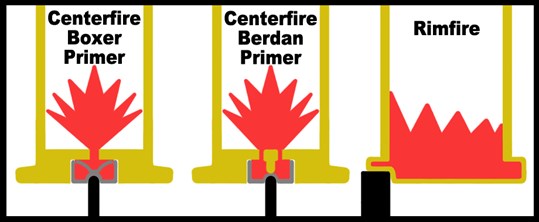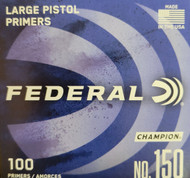A Bit Of History On Primers
Posted by Tim Haught on Sep 25th 2023
A little History about Primers:
Primers contained within a cup and pressed into the rear of the cartridge case were developed in the 1860s. Hiram Berdan, a U.S. military officer and engineer, developed what would be called the Berdan primer patented in March 1866. Berdan’s system utilized a soft copper cup containing the priming mixture pressed into a pocket formed at the rear of the cartridge case. Two small flash holes sat astride a small raised protuberance in the cup—now called the anvil. When the firing pin struck the primer cup, it crushed the compound against the anvil, causing it to explode and vent the hot gases and sparks through the flash holes, igniting the charge.
Almost concurrently, Colonel Edward Mounier Boxer of the Royal Arsenal, Woolwich, England, developed a somewhat different primer cap design for cartridges. While Berdan’s design utilized an anvil formed in the pocket of the case, Boxer’s design had the primer as a separate component within the primer cup. Because the anvil is located within the primer cup, a single, larger and centrally punched flash hole in the primer pocket of the case is used with Boxer primers. While there is little difference in function or performance between Berdan and Boxer primers, the use of a single central flash hole makes it much easier to replace the primer when reloading the case. It is largely for this reason that Boxer priming is used virtually exclusively in the U.S. where loading—and reloading—ammunition is far more popular here than in other places of the world.

Wikipedia Images
There are two sizes and four types of primers. Pistol primers have thinner and somewhat softer primer cups than their rifle counterparts. Small pistol and rifle primers utilize a cup 0.175" in diameter, while large pistol and rifle primers measure 0.210" across. Large rifle primers are 0.008" thicker than a large pistol primer. There are a few modern ultra-high-performance handgun cartridges—like the .221 Fireball, .454 Casull and the Linebaugh line of cartridges—that use small rifle primers because the pressures that theses cartridges generate require stronger, thicker primers to contain them. Another even larger—0.315" diameter—primer is used in the .50 BMG cartridge, as well as some wildcat and semi-wildcat cartridges based upon that cartridge case.
Within each are standard and magnum primers. Standard primers are for cartridges of moderate capacity and velocity. The powders in these cartridges readily ignite. Many magnum cartridges used large charges of very slow burning powders that can be difficult to ignite, especially in colder weather. These cartridges utilize a magnum primer with a more explosive priming compound that generates a hotter and more voluminous fire.
Rimfire cartridges use a priming compound within a folded rim of the cartridge instead of a separate primer. These are typically low-powered cartridges like the .22 LR or .17 HMR that do not generate a lot of pressure. Rimfire cartridges cannot be reloaded without some fairly sophisticated and expensive tooling, and that expense keeps most reloaders at bay.
Excerpt From American Rifleman:
January 15, 2018

